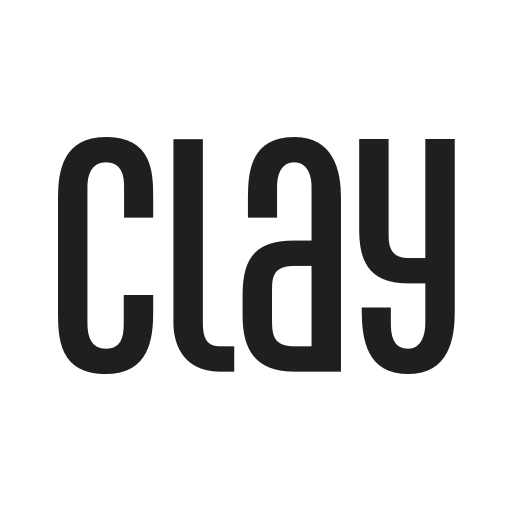In today’s digital age, newsletters have become a powerful tool for maintaining connections, sharing insights, and building your personal or professional brand. Whether you’re nurturing client relationships, keeping in touch with industry peers, or growing your influence, an engaging newsletter can be a game-changer. This guide will explore strategies and best practices for creating newsletter content that captivates your network and keeps them coming back for more.
The Importance of Engaging Newsletter Content
Before diving into strategies, let’s consider why engaging newsletter content matters:
- Relationship Building: Strengthens connections with your network.
- Thought Leadership: Establishes you as an authority in your field.
- Brand Awareness: Keeps your personal or company brand top-of-mind.
- Lead Generation: Attracts potential clients or collaborators.
- Community Building: Fosters a sense of community among your readers.
Key Strategies for Creating Engaging Newsletter Content
1. Know Your Audience
- Understand Their Needs: Tailor content to your audience’s interests and pain points.
- Segment Your List: Create targeted content for different segments of your network.
Example: If your network includes both startup founders and corporate executives, consider creating separate sections or even separate newsletters for each group.
2. Provide Value-Driven Content
- Educate: Share insights, tips, and best practices relevant to your field.
- Inspire: Include success stories or motivational content.
- Solve Problems: Address common challenges your audience faces.
Example: “5 Networking Strategies That Landed Me My Dream Job” or “How to Overcome Zoom Fatigue: Expert Tips”
3. Create a Compelling Structure
- Strong Opening: Start with an attention-grabbing headline or intro.
- Scannable Format: Use subheadings, bullet points, and short paragraphs.
- Visual Elements: Incorporate images, infographics, or videos to break up text.
Example: Use a “Top Story” section followed by quick “Industry Updates” and end with a “Tip of the Week”
4. Maintain a Consistent Voice and Style
- Develop Your Brand Voice: Whether professional, conversational, or witty, keep it consistent.
- Create a Template: Use a consistent layout and design for brand recognition.
Example: If you’re known for your data-driven insights, maintain a tone that’s authoritative yet accessible.
5. Include Interactive Elements
- Polls and Surveys: Engage readers and gather valuable feedback.
- Call-to-Action (CTA): Encourage responses, shares, or participation in events.
Example: “Quick Poll: What’s your biggest networking challenge? Click to vote!”
6. Curate Relevant Third-Party Content
- Industry News: Share and comment on important developments in your field.
- Recommended Resources: Point readers to valuable tools, articles, or books.
Example: “Must-Read of the Week: [Link to relevant article] – Here’s why it matters for our industry…”
7. Share Personal Insights and Stories
- Behind-the-Scenes: Offer glimpses into your work or thought processes.
- Lessons Learned: Share personal experiences and what you’ve learned from them.
Example: “What My Biggest Professional Failure Taught Me About Resilience”
8. Keep It Concise and Focused
- Respect Reader’s Time: Aim for content that can be consumed in 5-10 minutes.
- Single Theme: Focus each newsletter on a central theme or message.
Example: Instead of covering multiple topics superficially, dive deep into one area, like “Mastering the Art of the Follow-Up”
Tailoring Content for Different Types of Newsletters
For Professional Updates
- Focus on industry trends, career advice, and professional development tips.
- Include a “Featured Connection” section to highlight someone in your network.
Example: “Career Insight of the Month: The Rising Importance of Emotional Intelligence in Leadership”
For Thought Leadership
- Share original research, analysis, or commentary on industry developments.
- Include a section for your latest blog posts, articles, or speaking engagements.
Example: “My Take: How AI is Reshaping Networking in 2024”
For Community Building
- Spotlight community members or success stories.
- Share upcoming events or opportunities for community engagement.
Example: “Member Spotlight: How Sarah K. Built a Thriving Tech Community in Rural Areas”
For Product or Service Updates
- Highlight new features, services, or offerings.
- Share case studies or testimonials from satisfied clients.
Example: “New Feature Alert: How Our Latest Update Streamlines Your Networking Efforts”
Leveraging Technology for Newsletter Creation and Management
While content is king, technology can significantly enhance your newsletter strategy:
- Use Clay for Personalization and Relationship Management:
- Leverage Clay’s contact management features to segment your audience and personalize content.
- Track engagement and interactions to inform future newsletter topics.
- Set reminders to follow up with highly engaged readers or to re-engage inactive subscribers.
- Email Marketing Platforms:
- Utilize tools like Mailchimp or ConvertKit for design, distribution, and analytics.
- Content Curation Tools:
- Use apps like Feedly or Pocket to gather and organize relevant content for sharing.
- Design Tools:
- Create visually appealing newsletters with tools like Canva or Adobe Spark.
Best Practices for Newsletter Creation
- Consistent Schedule: Establish and maintain a regular sending schedule.
- Mobile Optimization: Ensure your newsletter is easily readable on mobile devices.
- A/B Testing: Experiment with different subject lines, content types, and sending times.
- Personalization: Use recipient names and tailor content based on their interests or behavior.
- Clear Unsubscribe Option: Make it easy for recipients to opt-out if they choose.
- Proofread Thoroughly: Maintain professionalism with error-free content.
- Monitor Metrics: Regularly review open rates, click-through rates, and engagement to refine your strategy.
Common Mistakes to Avoid
- Overly Promotional Content: Balance promotional material with valuable, non-promotional content.
- Inconsistent Sending: Stick to your promised frequency to build trust and anticipation.
- Ignoring Mobile Users: Always test how your newsletter appears on various devices.
- Neglecting Subject Lines: Craft compelling subject lines to improve open rates.
- Information Overload: Avoid cramming too much into a single newsletter.
Measuring and Improving Your Newsletter Performance
To continually enhance your newsletter’s effectiveness:
- Track Key Metrics: Monitor open rates, click-through rates, and unsubscribe rates.
- Gather Feedback: Periodically ask subscribers for their input on content and format.
- Analyze Top-Performing Content: Identify what resonates most with your audience.
- Stay Updated: Keep informed about email marketing trends and best practices.
Conclusion
Creating engaging newsletter content for your network is a powerful way to nurture relationships, establish thought leadership, and grow your influence. By focusing on providing value, understanding your audience, and leveraging the right tools, you can create newsletters that your network looks forward to receiving.
Remember, the key to a successful newsletter is consistency in quality and frequency. Use tools like Clay to manage your relationships effectively and inform your content strategy. With time and practice, your newsletter can become an invaluable asset in your professional toolkit, helping you stay connected with your network and opening doors to new opportunities.
By implementing these strategies and continually refining your approach based on feedback and performance metrics, you’ll be well on your way to creating newsletter content that truly engages your network and supports your professional goals.

